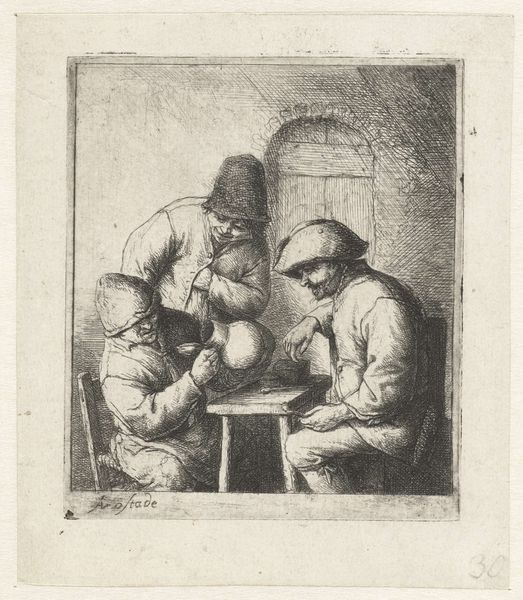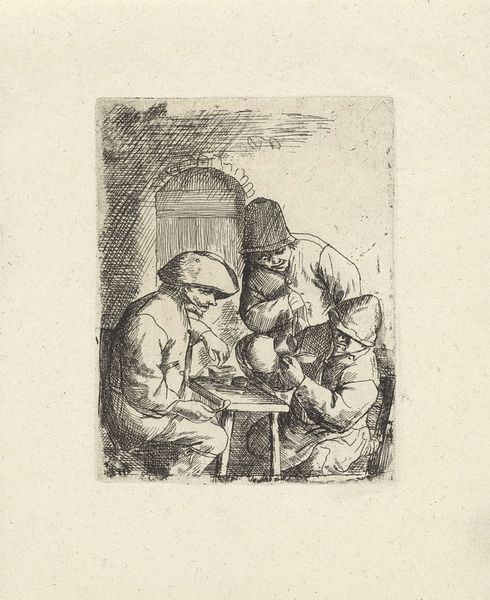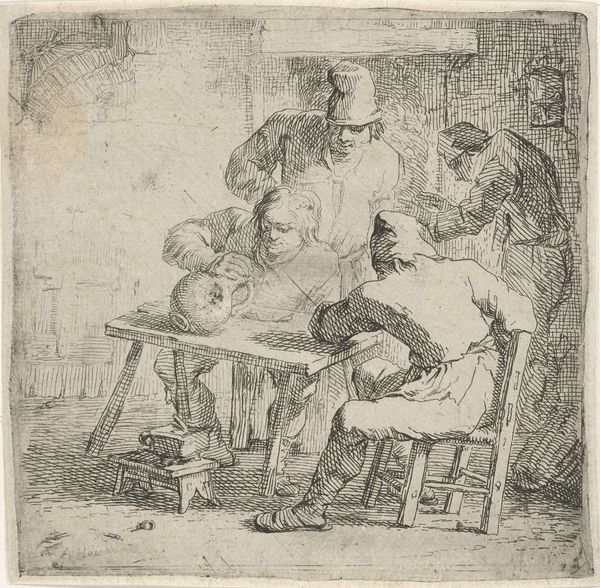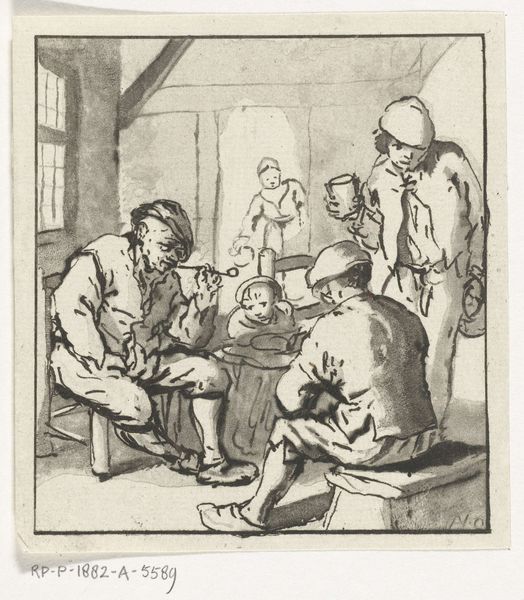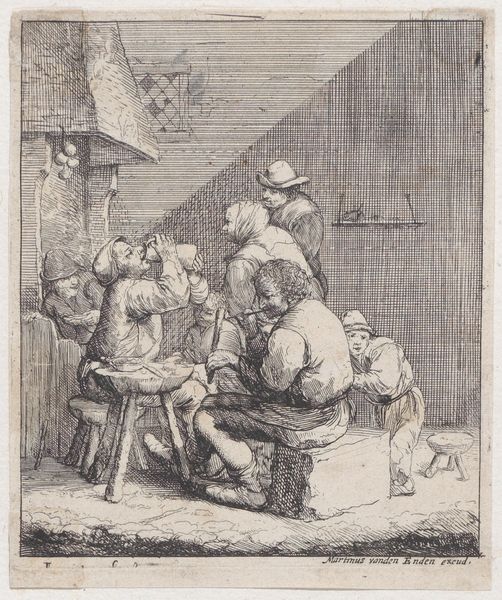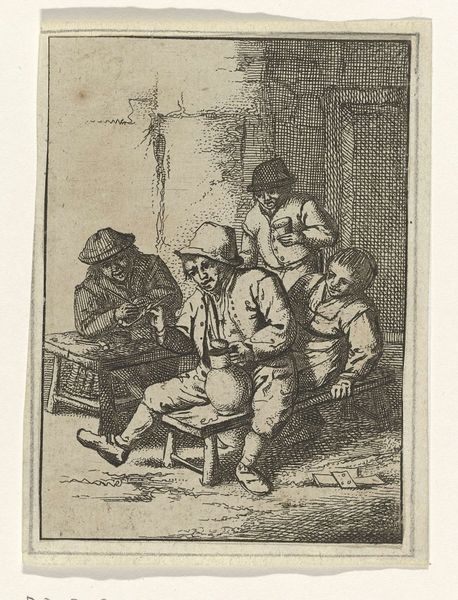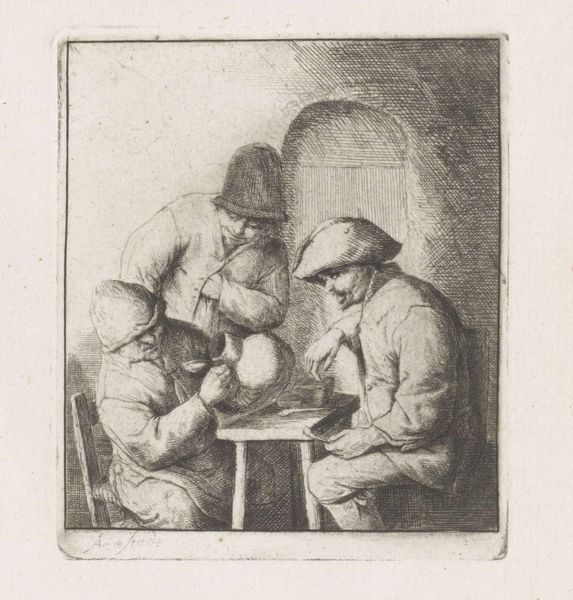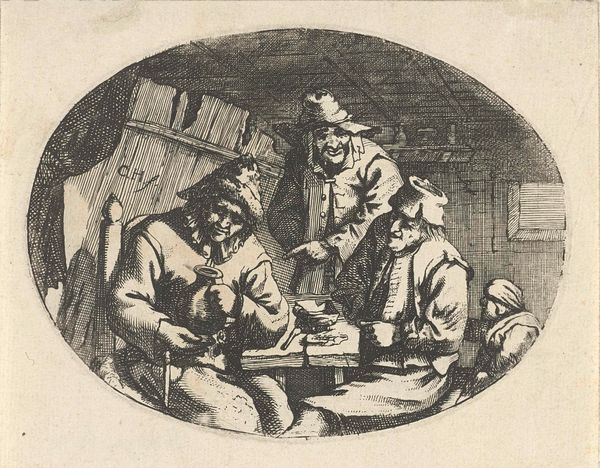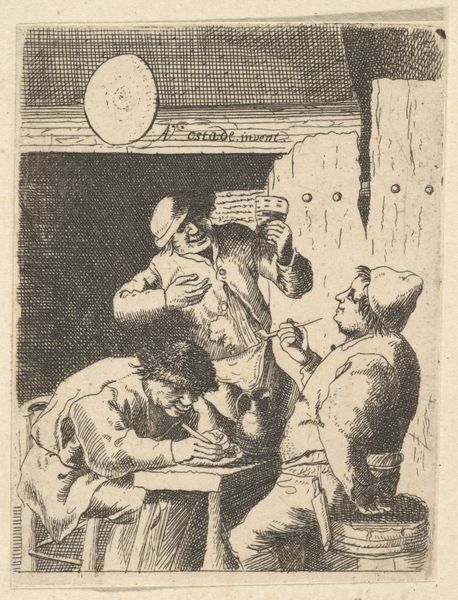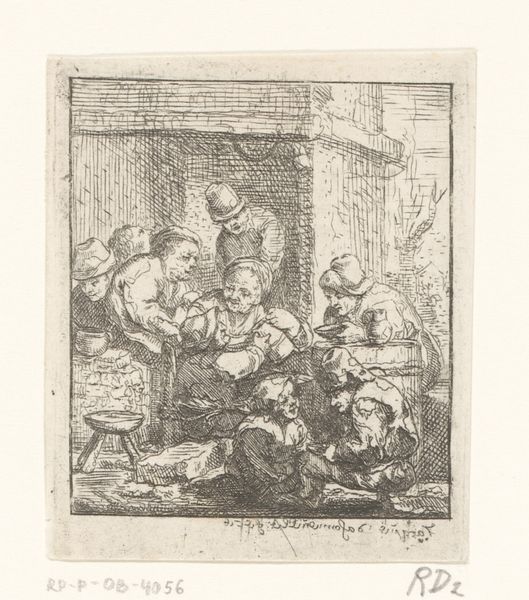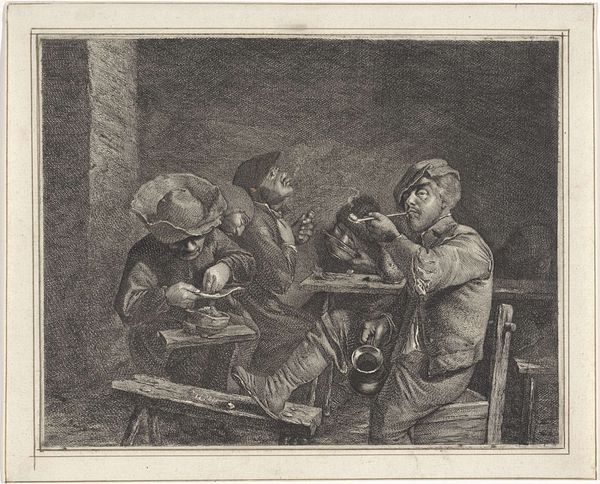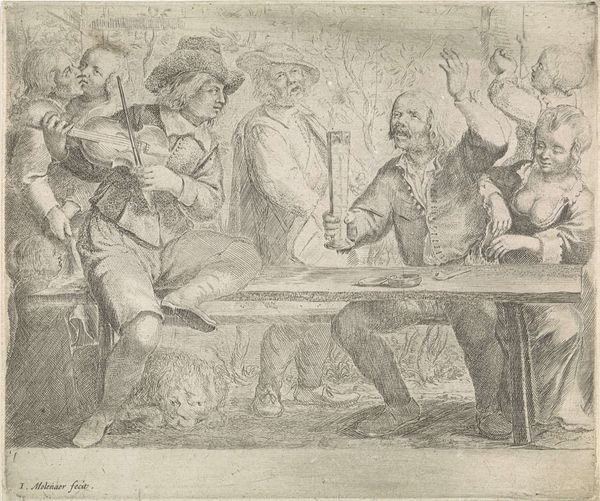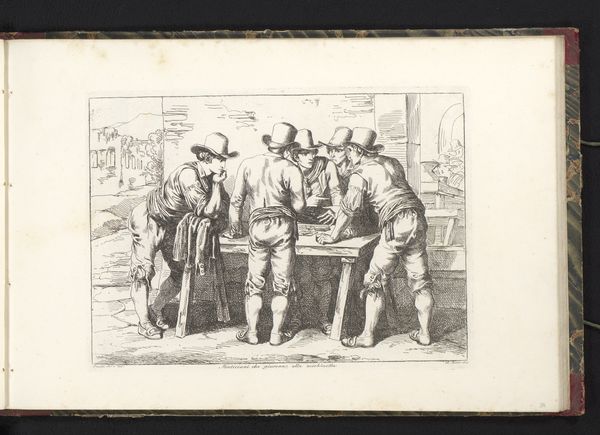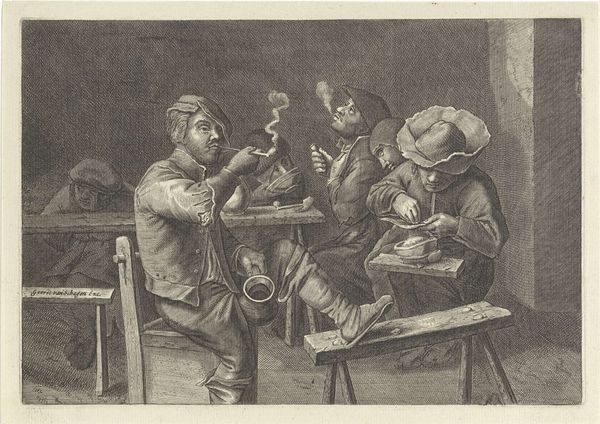
Twee herbergscènes: man kijkt in lege kruik, twee mannen kijken toe en twee rokers en drinker in herberg Possibly 1651 - 1745
0:00
0:00
anonymous
Rijksmuseum
print, engraving
#
narrative-art
#
dutch-golden-age
# print
#
figuration
#
genre-painting
#
engraving
Dimensions: height 91 mm, width 143 mm
Copyright: Rijks Museum: Open Domain
Curator: This engraving, titled "Twee herbergscènes," or "Two Tavern Scenes," possibly from between 1651 and 1745, depicts scenes of everyday life, typical of the Dutch Golden Age. It has a rather lighthearted, even comical air about it. I am intrigued by the ordinary, working-class subject. What resonates most with you about this print? Editor: Well, initially I was drawn to the composition, the juxtaposition of the two scenes, almost like comparing two sides of the same coin. One side seems more reflective, and the other… well, chaotic! But what strikes me most is the lack of context about these people. What can we truly know about their lives? Curator: Exactly! Genre paintings, like this one, often present an idealized, or perhaps romanticized, view of working-class life, obscuring the realities of poverty, labor, and social hierarchy. Consider how the print's accessibility - its creation as a multiple - would have circulated these images, perhaps reinforcing existing power structures and stereotypes. Do you think it is intended as a moral lesson or simply observation? Editor: That’s a really interesting point. It makes me think about the power of images, even then, to shape perceptions. The one guy seems distraught that his jug is empty, so maybe there's a morality at play: that over-indulgence leads to emptiness? But I don't know if that's necessarily true or the artist's intention. Curator: Right, it could very well be! Consider this in the broader scope: this engraving captures a moment of supposed leisure within a society grappling with issues of wealth disparity, colonialism, and its implications. How might the consumption depicted here relate to the economic and social realities of the time? What is this small picture a window into? Editor: So it’s less about what is literally depicted and more about what's implied? Like looking beyond the surface of a simple tavern scene and seeing it as a commentary on the political landscape of that time. It definitely makes you think more deeply about the subject beyond just 'everyday' people! Thanks for that new perspective. Curator: Precisely. These images offer not just glimpses into the past, but opportunities to question our assumptions and understandings of that past through a contemporary lens.
Comments
No comments
Be the first to comment and join the conversation on the ultimate creative platform.
